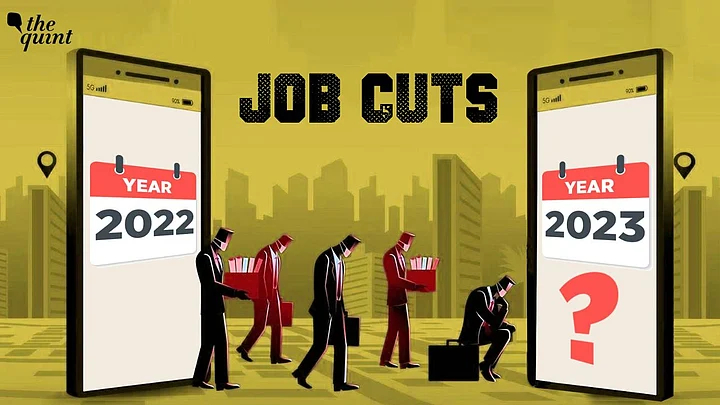2022 saw a frenzy of firings in the tech industry. According to TrueUp’s tech layoff tracker, over 1,000 tech companies laid off more than 2,30,000 employees around the world this year!
The nightmarish year is coming to an end but it may not be the end of job cuts. Will the ongoing economic distress and fear of global recession mean more pink slips are on the cards in 2023?
(The interactive will be displayed below. Please wait for a few seconds if it hasn’t loaded yet on your screen.)
We try to make sense of 2022's mass layoffs in the tech space and forecast 2023's job market.
How Many Job Cuts Make a Mass Layoff?
Before understanding the reasons behind the mass layoffs, it's important to know what comprises 'mass layoffs'?
According to Unites States' Worker Adjustment and Retraining Notification (WARN) Act of 1988, a mass layoff occurs when:
At least 50 employees are laid off during a 30-day period, if the laid-off employees made up at least one third of the workforce; or
500 employees are laid off during a 30-day period, no matter how large the workforce
Why Was 2022 the Year of Mass Layoffs?
Overhiring and 'The Great Resignation'
After the economic turbulence induced by the COVID-19 pandemic, 2020 saw layoffs in certain sectors as employers began cutting their costs due to the uncertainty caused by the crisis.
After the initial uncertainty of COVID waned off, companies went on with business as usual, moulding their work habits with practices like remote working, work from home, virtual meetings, etc.
For instance, hedging their bets on consumer behaviour shaped by the pandemic, tech companies went overboard with hiring. Companies like Meta accelerated hiring across all departments, banking on the belief that e-commerce would continue to grow.
"To keep pace with the internet boom, meet the surging demand and expand into new markets – most companies took the route of surplus hiring during the pandemic."Debashree Lad, Chief People Officer at fintech firm CredAble
Later, the pandemic also gave way to trends like 'The Great Resignation' and 'quiet quitting' among employees.
Economic Downturn in 2022
The Russia-Ukraine war brought major economic decline globally. Supply chains were disrupted, interest rates and fuel costs rose, headwinds of inflation had picked up, and the world was staring at a recession.
"With the online business losing its sheen post the pandemic, the newly hired employees turned out to be expensive. The fear of recession and inflation coupled with slow growth had many companies looking to restructure and cut costs," Lad added.
After the first half of the year, balance sheets became stretched owing to dropping sales and revenues. Initially, companies tried to resist the economic shocks by freezing their hiring. But eventually, they resorted to layoffs.
Who Bore the Brunt of the Layoffs?
Tech companies were the major drivers of layoffs in 2022.
For instance, Facebook parent Meta reported its first-ever yearly decline in revenue in 2022. Its market cap saw a massive drop to about $300 billion at the end of 2022 from over $1 trillion in June 2021.
Other tech giants like Amazon, Microsoft, Intel, among others, have all handed out pink slips to a sizeable proportion of their workforce.
While the big tech companies led the firing spree globally, in India, it were the startups that caused the bulk of layoffs.
"India has seen an abundance of start-ups emerge in a wide range of industries, including e-gaming, fin-tech, and education. However, the tech sector experienced some of the biggest shifts in its history, and controlling the cash flow to keep the business going has led to huge layoffs as a result of adverse macroeconomic factors," said Ketan Godkhindi, Chief Strategy Officer at Witzeal Technologies, a Gurugram-based gaming technology company.
"When it comes to layoffs, most companies adopt the ‘last-in, first-out’ approach. Freshers, and employees that command a higher pay scale, are most affected by layoffs. While initially, the majority of the layoffs were around non-tech roles such as marketing, operations, and feet-on-street sales – in recent times, software engineers, recruiters, product and program management roles, and UX designers have been more vulnerable to layoffs."Lad told The Quint
Why Startups Were the Worst-Affected?
According to various estimates, Indian startups slashed over 18,000 jobs in 2022. Mainly because their pandemic-driven growth had resulted in big-ticket funding rounds from leading venture capital firms in 2021, but the crisis in 2022 dried up their flow of funds.
Ed-techs presents the best example to understand the broad picture.
Out of the big layoff numbers, ed-tech firms held the lion's share – accounting for almost half of all the firings that Indian startups saw in 2022.
After a boost in remote learning during the pandemic, India's education technology companies had registered record funding in 2020 and 2021. But as physical classrooms reopened as COVID-19 receded, the ed-tech boom was halted. Unicorns like BYJU's, Unacademy, etc, which were riding on astronomical valuations, witnessed a funding crunch in 2022. This caused a shift in their business models and provoked job cuts.
Will Mass Layoffs Continue in 2023?
With a looming recession, job cuts are likely to continue in 2023 as well. Godkhindi said, "Balancing the utilisation of resources could be a time-consuming process for the companies."
"2023 will be a year of sustenance as companies that are in a considerably bad patch will look to cut bench strength. Economists are of the opinion that the coming year will be defined by a mild recession and decelerating growth. This might result in companies slowing down headcount addition."Debashree Lad, Chief People Officer at CredAble to The Quint
All in all, if 2022 was terrible for tech employees, the forecast for 2023 has caution written all over it.
